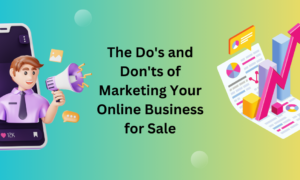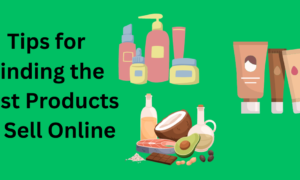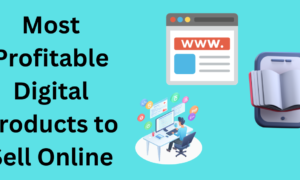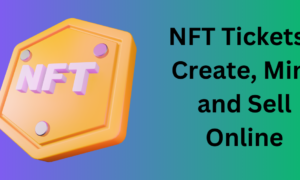In today’s digital age, social media is more than just a way to keep in touch with friends and family; it’s a crucial tool for business growth. For online businesses, effectively using social media can lead to increased sales, a more substantial brand presence, and a loyal customer base. To maximize these platforms, it’s essential to understand your audience, choose the proper social media channels, and develop a strategic plan.
This includes creating engaging and high-quality content, interacting with your community, and leveraging paid advertising and influencer partnerships. Regularly analyzing performance and staying adaptable to trends ensures continued success. Following these strategies and best practices, your online business can thrive on social media.
Social Media to Boost Your Online Business Sale
Understanding Your Audience
Identifying Target Demographics
Identifying your target audience is paramount to effectively utilizing social media for your business. Understanding the demographics you aim to reach—such as age, gender, location, and interests—is crucial. This knowledge lets you customize your content and engagement strategies to resonate with your audience. For instance, if your target demographic is young adults interested in fitness, your content may focus on health tips and workout routines.
By tailoring your approach to match the preferences and behaviors of your audience, you can maximize engagement and build meaningful connections. This foundational understanding lays the groundwork for a successful social media presence, driving business growth and fostering a loyal community.
Conducting Market Research
Market research plays a pivotal role in refining your social media strategy. You can gain valuable insights into your audience’s preferences and behaviors by utilizing tools like surveys, polls, and social media analytics. Understanding what content resonates with your audience effectively allows you to tailor your messaging. For instance, if your research reveals that your audience prefers visual content over text-based posts, you can focus on creating more images and videos.
Similarly, if specific topics or trends consistently generate engagement, you can incorporate them into your content strategy. By leveraging market research to inform your decisions, you can ensure that your social media efforts are targeted and impactful, leading to increased engagement, brand loyalty, and, ultimately, business success.
Creating Buyer Personas
After collecting sufficient data, constructing detailed buyer personas is essential. These fictional representations embody your ideal customers, providing valuable insights into their needs, preferences, and behaviors. By creating buyer personas, you can humanize your target audience, making it easier to empathize and understand their motivations. These personas guide your content creation and marketing endeavors, helping you tailor messages and strategies to resonate with specific audience segments.
For instance, if one persona represents a budget-conscious shopper seeking value, your messaging may focus on affordability and quality. Developing these personas allows you to craft more targeted and personalized campaigns, ultimately fostering more robust connections with your audience and driving business growth.
Choosing the Right Platforms
Overview of Popular Social Media Platforms
Social media platforms vary significantly in terms of functionality and user demographics. Platforms like Facebook, Instagram, Twitter, LinkedIn, and TikTok cater to diverse audiences and serve distinct purposes. For example, Facebook is renowned for its broad user base and extensive advertising capabilities, making it suitable for various businesses. On the other hand, Instagram emphasizes visual content and storytelling, making it ideal for brands with visually appealing products or services. Twitter excels in real-time updates and engagement, while LinkedIn is a professional networking platform suited for B2B marketing and career-related content.
With its short-form videos and younger audience, TikTok offers unique opportunities for brands to showcase creativity and authenticity. Understanding the nuances of each platform enables businesses to select the most appropriate channels for their marketing objectives and effectively engage with their target audience.
Matching Platforms with Business Goals
Selecting social media platforms that align with your business goals is crucial for effective marketing strategies. For instance, if your company operates in the B2B sector, platforms like LinkedIn offer targeted networking and advertising opportunities tailored to professionals and businesses. Its emphasis on career development and industry insights makes it an ideal platform for showcasing expertise and generating leads. Conversely, platforms like Instagram and Pinterest provide ample opportunities to showcase your offerings through high-quality imagery and videos if your business revolves around visually appealing products or services.
These platforms are particularly effective for engaging with audiences drawn to visual content, allowing companies to leverage their aesthetics to drive engagement and sales. By understanding your business objectives and the unique features of each platform, you can make informed decisions about where to focus your social media efforts for optimal results.
Platform-Specific Strategies
Effectively leveraging social media involves adapting your approach to suit the unique characteristics of each platform. Instagram, for instance, relies heavily on captivating visuals and strategic hashtag usage to engage users. Businesses can showcase their products or services through visually appealing content and reach a wider audience by utilizing relevant hashtags. Conversely, Twitter’s fast-paced nature makes it ideal for real-time updates, breaking news, and direct customer communication.
Its concise format encourages businesses to deliver succinct messages and promptly respond to inquiries or feedback. By understanding each platform’s distinctive features and user behaviors, businesses can tailor their content and engagement strategies accordingly, maximizing their impact and effectively connecting with their target audience on various social media channels.
Creating a Social Media Strategy
Setting Clear Goals and Objectives
Setting clear and measurable goals is essential for a successful social media presence. Before diving into social media marketing, businesses should define their goals. Whether the objective is to enhance brand awareness, drive traffic to the website, or increase sales, having specific goals provides direction and focus. By articulating these objectives, businesses can develop strategies and tactics tailored to achieving them. Additionally, measurable goals allow for tracking progress and evaluating the effectiveness of social media efforts.
For example, engagement rates, website visits, lead generation, or conversion rates can indicate whether the goals are met. Regularly reviewing these metrics enables businesses to make informed adjustments to their strategies, ensuring that their social media presence aligns with their overarching objectives and contributes to overall business success.
Planning Content Types and Themes
Maintaining audience engagement on social media requires a diverse content strategy. By incorporating various content types, such as promotional posts, educational content, user-generated content, and entertainment, businesses can cater to different interests and preferences within their audience. Promotional posts highlight products or services, while educational content provides valuable information or insights related to the industry. User-generated content fosters community involvement and authenticity by featuring content created by customers or followers.
Additionally, mixing in entertaining content adds a lighter touch and keeps the audience entertained. Planning and organizing this diverse content can be facilitated using a content calendar. This tool helps businesses schedule posts in advance, maintain consistency in posting frequency, and ensure that content aligns with overall marketing objectives. Consistency in content delivery enhances brand visibility and strengthens relationships with the audience over time.
Establishing a Posting Schedule
Consistency plays a vital role in the success of social media marketing efforts. By establishing a regular posting schedule, businesses can keep their audience engaged and maintain visibility without overwhelming them. Consistent posting fosters familiarity with the brand and ensures that followers know when to expect new content, increasing the likelihood of engagement. Tools like Buffer and Hootsuite offer valuable assistance in managing posting schedules efficiently.
These platforms allow businesses to schedule posts in advance, ensuring a steady flow of content even during busy periods. Additionally, they provide features for monitoring engagement, analyzing performance, and optimizing posting times for maximum reach and impact. By leveraging these tools, businesses can streamline their social media management processes and maintain a consistent presence that resonates with their audience.
Content Creation and Curation
Importance of High-Quality Content
Focusing on quality over quantity is a fundamental principle of effective social media marketing. High-quality content captures followers’ attention and encourages them to engage with and share posts. By prioritizing quality, businesses can create content that resonates with their audience, builds credibility, and strengthens brand loyalty. Quality content adds value to the audience’s experience through informative articles, captivating visuals, or entertaining videos.
It reflects positively on the brand’s reputation and establishes it as a trusted source of valuable information or entertainment. Furthermore, high-quality content generates more engagement, such as likes, comments, and shares, increasing visibility and reach on social media platforms. Ultimately, prioritizing quality content enhances the overall effectiveness of social media marketing efforts and contributes to long-term success.
Types of Engaging Content
Variety is vital to keeping your social media audience engaged and interested. By diversifying your content with various types, such as blogs, infographics, videos, and polls, you cater to different preferences and capture attention in other ways. Blogs provide in-depth information, infographics convey complex data visually appealingly, and videos offer dynamic storytelling opportunities. Additionally, interactive content like quizzes and live videos add an extra layer of engagement, encouraging audience participation and fostering a sense of community.
Quizzes offer interactive entertainment, while live videos provide real-time interaction, allowing businesses to connect with their audience more personally. By incorporating a mix of content types into your social media strategy, you can maximize engagement, reach a wider audience, and create a more memorable and enjoyable experience for your followers.
Balancing Original and Curated Content
Balancing original and curated content is crucial for maintaining a vibrant and engaging social media presence. Original content reflects your brand’s unique voice and perspective, allowing you to showcase your expertise and personality. However, curated content complements your feed by providing additional value and diversity. By sharing relevant industry news, tips, and insights from reputable sources, you demonstrate your commitment to providing valuable information to your audience. Curated content also helps keep your feed active, even when not creating original posts.
It allows you to tap into a wider pool of resources and expertise, enriching the overall experience for your followers. Additionally, sharing content from other sources fosters connections within your industry and encourages collaboration and engagement with other content creators. Ultimately, a well-balanced mix of original and curated content enhances your credibility and authority while keeping your audience informed and engaged.
Utilizing Visual Content
Power of Images and Videos
Visual content holds immense power in capturing audience attention and driving engagement on social media platforms. Research indicates that posts containing images or videos garner considerably higher interaction levels than text-only posts. The human brain processes visual information more effectively and efficiently than text, making visual content more captivating and memorable. Images and videos can evoke emotions, tell stories, and convey information concisely and compellingly, making them highly effective tools for communication.
Additionally, in today’s fast-paced digital landscape, where users scroll through vast content, visually appealing posts stand out and entice users to pause and engage. Incorporating visual content into your social media strategy can significantly enhance the effectiveness of your communication efforts, increase audience engagement, and ultimately drive better results for your brand.
Creating Eye-Catching Visuals
Investing in quality design is essential for creating visually appealing content that resonates with your audience. Platforms like Canva offer user-friendly tools that empower businesses to produce professional-looking visuals, even without prior design experience. Maintaining consistency in visual branding is essential; your visuals should reflect your brand identity through consistent use of colors, fonts, and imagery. This consistency helps reinforce brand recognition and fosters trust and familiarity among your audience.
Whether creating social media posts, infographics, or promotional materials, adhering to your brand’s style guidelines ensures coherence and reinforces your brand message. By prioritizing good design and aligning visuals with your brand identity, you can elevate the quality of your content, enhance audience engagement, and strengthen your brand presence across social media platforms.
Leveraging Live Streaming
Live streaming provides businesses an unparalleled opportunity to engage with their audience in real time, fostering a sense of immediacy and authenticity. Whether used for product launches, behind-the-scenes glimpses, or interactive Q&A sessions, live streaming allows brands to connect with their audience more personally and intimately. By showcasing raw, unfiltered moments, businesses can build trust and authenticity, as viewers feel like they’re experiencing events as they unfold.
Live streaming also encourages real-time interaction, enabling audiences to ask questions, provide feedback, and participate in discussions, further strengthening the bond between brand and consumer. Leveraging live streaming effectively can humanize your brand, create memorable experiences for your audience, and ultimately drive engagement, loyalty, and sales.
Engagement and Community Building
Strategies for Increasing Engagement
Engagement on social media is a reciprocal process that requires active participation from both the brand and the audience. To stimulate interaction, businesses should employ various tactics such as asking questions, running contests, and using call-to-action phrases that prompt responses from their followers. By inviting participation, brands create opportunities for dialogue and collaboration, fostering community and belonging among their audience.
Equally important is responding promptly to comments and messages and demonstrating attentiveness and appreciation for audience input. This acknowledges the individual’s contribution and signals to others that their voices are valued. By nurturing this two-way communication, businesses can cultivate more robust relationships with their audience, increase brand loyalty, and drive engagement and growth on social media platforms.
Responding to Comments and Messages
Ignoring your audience’s comments and messages is a missed opportunity to foster community and loyalty. By promptly acknowledging comments and responding to messages, businesses demonstrate that they value and actively engage with their audience’s input. This responsiveness encourages ongoing interaction and strengthens the bond between the brand and its followers. It creates a welcoming atmosphere where individuals feel heard and appreciated, increasing trust and loyalty.
Additionally, engaging with your audience personally humanizes the brand and reinforces its commitment to customer satisfaction. Ultimately, by prioritizing responsiveness and actively participating in conversations, businesses can cultivate a loyal and engaged community that supports their brand and contributes to its success on social media platforms.
Building a Loyal Community
Consistency, authenticity, and active engagement are vital pillars for nurturing a loyal community on social media platforms. Consistent posting schedules and messaging establish reliability and trust, while authentic interactions foster genuine connections with followers. You demonstrate that you value their input and opinions by actively engaging with your audience, responding to comments, and initiating conversations. Encouraging user-generated content further strengthens community bonds by empowering followers to contribute to the brand’s narrative and feel a sense of ownership.
Creating a welcoming environment where individuals feel heard, respected, and valued fosters a sense of belonging and loyalty among your followers. By prioritizing these elements in your social media strategy, you can cultivate a dedicated community of brand advocates who actively support and promote your business, driving long-term success and growth.
Paid Advertising on Social Media
Overview of Social Media Ads
Paid advertising can significantly expand your brand’s reach and visibility on social media platforms. With a wide range of ad formats available, including photo, carousel, and video ads, businesses can tailor their advertising campaigns to suit their specific objectives and target audience preferences. Photo ads effectively showcase products or services visually, while carousel ads allow for multiple images or videos within a single ad unit, enabling storytelling or highlighting various offerings.
Video ads, on the other hand, can convey more information in an engaging and dynamic format, capturing audience attention and driving higher engagement rates. By leveraging paid advertising on social media, businesses can effectively target their desired audience segments, increase brand awareness, drive website traffic, and ultimately generate leads and sales, thus maximizing the return on investment from their advertising efforts.
Benefits of Paid Campaigns
Paid campaigns on social media platforms offer businesses the ability to precisely target specific demographics, enhancing the likelihood of reaching potential customers who are most likely to be interested in their products or services. By leveraging advanced targeting options such as age, gender, location, interests, and behaviors, businesses can ensure that their ads are displayed to the most relevant audience segments, thereby maximizing the effectiveness of their campaigns. Additionally, paid advertising platforms provide detailed analytics and performance metrics that allow businesses to track the effectiveness of their campaigns in real time.
These analytics provide valuable insights into key performance indicators such as reach, engagement, click-through rates, conversions, and return on investment (ROI), enabling businesses to optimize their campaigns for maximum impact and efficiency. Ultimately, paid campaigns offer businesses a powerful tool for reaching their target audience and driving measurable results on social media platforms.
Tips for Effective Ad Creation
Crafting visually appealing ads with a clear call to action is essential for driving engagement and conversions on social media platforms. Visuals are crucial in capturing the audience’s attention, so you must use high-quality images or videos that resonate with your target audience. Additionally, a compelling call to action prompts viewers to take the desired action, whether making a purchase, signing up for a newsletter, or visiting a website.
A/B testing, or split testing, allows businesses to experiment with different ad elements, such as visuals, copy, and calls to action, to determine which combinations resonate best with their audience. By systematically testing and analyzing the performance of various ad variations, businesses can optimize their campaigns for maximum effectiveness and drive better results on social media platforms.
Influencer Marketing
Identifying the Right Influencers
Partnering with influencers can be a powerful strategy for enhancing your brand’s visibility and reach on social media platforms. When selecting influencers, choosing individuals whose audience demographics and interests align closely with your target market is crucial. By collaborating with influencers with a strong and engaged following within your niche, you can amplify your brand’s message and increase awareness among potential customers. Additionally, it’s essential to ensure that the values and persona of the influencer align with your brand’s image and ethos.
Authenticity is critical in influencer marketing, so partnering with influencers who genuinely believe in and advocate for your products or services can produce more authentic and impactful content that resonates with their audience. By carefully selecting and partnering with the right influencers, businesses can leverage their influence to drive engagement, generate leads, and increase sales and brand loyalty.
Building Partnerships
When reaching out to influencers for collaboration, it’s essential to present a compelling proposal outlining the benefits of working together. Offer something of value in exchange for their partnership, whether it’s free products, monetary compensation, or exposure to your brand’s audience. Communicate how the collaboration aligns with their interests and benefits both parties. Provide details about the campaign objectives, expectations, and any specific requirements.
Personalize your outreach to demonstrate a genuine interest in their content and audience. By presenting a mutually beneficial proposition and demonstrating professionalism and respect, you increase the likelihood of securing successful partnerships with influencers. Building positive relationships with influencers can lead to long-term collaborations and opportunities for further brand promotion and growth on social media platforms.
Measuring Influencer Impact
Measuring the performance of influencer campaigns is crucial for evaluating their effectiveness and optimizing future strategies. Track key metrics such as engagement, website traffic, and sales conversions to gauge the impact of your influencer collaborations. Engagement metrics, including likes, comments, shares, and click-through rates, provide insights into the level of audience interaction and interest generated by the campaign. Monitoring website traffic attributed to influencer referrals helps assess the campaign’s impact on website visits and user engagement.
Additionally, tracking sales conversions or other desired actions resulting from influencer-driven traffic provides valuable data on the campaign’s return on investment (ROI) and overall effectiveness in driving revenue. By analyzing these metrics, businesses can identify successful strategies, areas for improvement, and opportunities to optimize future influencer partnerships for maximum impact and ROI on social media platforms.
Analyzing and Measuring Success
Importance of Analytics
Analytics play a vital role in providing valuable insights into the effectiveness of your social media strategies. By utilizing tools such as Google Analytics and social media insights, businesses can track various metrics to understand what’s working well and needs improvement. Google Analytics provides comprehensive data on website traffic, user behavior, and conversions, allowing businesses to measure the impact of their social media efforts on website visits, engagement, and conversions.
Social media insights offered by platforms like Facebook, Instagram, and Twitter provide valuable data on audience demographics, engagement metrics, and post-performance, enabling businesses to assess the effectiveness of their content and engagement strategies. By regularly analyzing these analytics, businesses can make data-driven decisions, optimize their social media strategies, and achieve better results regarding audience engagement, brand visibility, and, ultimately, business growth.
Key Metrics to Track
Monitoring key metrics is essential for evaluating the success of your social media strategy. Metrics such as engagement rate, click-through rate (CTR), conversion rate, and follower growth offer valuable insights into the effectiveness of your efforts. The engagement rate indicates how actively your audience interacts with your content, while CTR measures the effectiveness of your call-to-action in driving clicks. Conversion rate reflects the percentage of users who take a desired action, such as purchasing or signing up for a newsletter, after interacting with your content.
Follower growth indicates the rate at which your audience is expanding over time. By regularly tracking these metrics, businesses can identify trends, assess the impact of their strategies, and make informed decisions to optimize their social media presence for better engagement, conversion, and growth.
Adjusting Strategies Based on Data
Flexibility and adaptability are essential components of a successful social media strategy. By closely monitoring data and metrics, businesses can identify trends, patterns, and areas for improvement in their social media performance. Be prepared to pivot your strategy based on this data, adjusting tactics, content types, or targeting strategies to optimize results. Continuous improvement ensures that social media efforts remain practical and relevant in a rapidly evolving digital landscape.
Experiment with new approaches, test different content formats and stay attuned to audience preferences and behavior changes. By embracing continuous learning and refinement, businesses can stay ahead of the curve, maximize their social media impact, and achieve their marketing objectives more effectively over time.
Social Media Tools and Resources
Overview of Helpful Tools
Streamlining your social media efforts is made easier with many available tools designed to simplify various tasks. These tools offer functionalities ranging from scheduling posts in advance to analyzing performance metrics, enabling businesses to save time and enhance efficiency in their social media management. Platforms like Buffer and Hootsuite allow users to schedule posts across multiple social media channels, ensuring consistent and timely content delivery.
Analytics tools such as Sprout Social and Socialbakers provide insights into audience demographics, engagement metrics, and post-performance, helping businesses make data-driven decisions to optimize their strategies. Additionally, content creation tools like Canva and Adobe Spark facilitate the creation of visually appealing graphics and videos without requiring extensive design skills. By leveraging these tools, businesses can streamline their social media workflows, increase productivity, and ultimately achieve better results in their social media marketing efforts.
Tools for Scheduling and Analytics
Tools such as Hootsuite, Buffer, and Sprout Social offer comprehensive solutions for managing social media tasks efficiently. These platforms allow users to schedule posts in advance across multiple social media channels, ensuring consistent content distribution and freeing up time for other activities. Moreover, they provide robust analytics capabilities, offering insights into key metrics such as engagement, reach, and follower growth. By analyzing performance data, businesses can identify trends, measure the effectiveness of their strategies, and make informed decisions to optimize their social media presence.
Additionally, these tools automate routine tasks such as post-scheduling, content publishing, and social media monitoring, streamlining workflows and increasing productivity. Overall, leveraging these tools empowers businesses to maximize their social media impact, improve engagement with their audience, and achieve their marketing goals more effectively.
Resources for Staying Updated
Staying abreast of the latest social media trends and updates is essential for maintaining a competitive edge in the ever-evolving digital landscape. To stay informed, it’s advisable to follow industry blogs, attend webinars, and actively participate in relevant online communities and forums. Industry blogs provide insights into emerging trends, best practices, and case studies, helping businesses stay ahead of the curve. Webinars offer opportunities to learn from industry experts, gain practical knowledge, and stay updated on new features and tools provided by social media platforms.
Additionally, joining online communities allows professionals to network with peers, share experiences, and exchange valuable insights and strategies. By actively engaging with these resources, businesses can keep their knowledge fresh, adapt to changing trends, and implement effective strategies to maximize their success in social media marketing.
Case Studies
Successful Examples of Businesses Using Social Media
Examining case studies of successful companies like Glossier and Wendy’s can offer valuable insights and lessons for building a solid social media presence. Glossier, for example, leveraged Instagram to cultivate a devoted following by showcasing user-generated content, engaging with followers, and maintaining a visually cohesive feed that reflected its brand identity. On the other hand, Wendy’s gained recognition for its witty and humorous interactions on Twitter, effectively humanizing the brand and fostering a strong connection with its audience.
By analyzing these case studies, businesses can learn strategies for engaging with their audience authentically, leveraging each platform’s unique features, and cultivating a distinct brand personality that resonates with their target market. These examples demonstrate the power of creativity, authenticity, and consistency in building a loyal following and driving success on social media platforms.
Lessons Learned from Case Studies
By dissecting the successful strategies employed by companies like Glossier and Wendy’s, businesses can glean valuable insights and adapt them to their social media efforts. Analyzing what these companies did right—cultivating a strong brand identity, engaging with their audience authentically, or leveraging humor and wit—provides a blueprint for success. For instance, businesses can emulate Glossier’s focus on user-generated content and visual storytelling to foster community engagement or adopt Wendy’s witty and playful tone to humanize their brand and connect with followers.
However, it’s essential to tailor these strategies to fit your brand’s unique voice, values, and objectives. By adapting proven tactics to align with your brand identity and goals, businesses can enhance their social media presence, drive engagement, and ultimately achieve more tremendous success in reaching and connecting with their target audience.
Challenges and Pitfalls
Common Mistakes to Avoid
Avoiding common pitfalls in social media marketing is crucial for maintaining a positive relationship with your audience and maximizing engagement. Over-posting can overwhelm and annoy followers, leading to declining engagement and potential unfollows. Ignoring positive or negative feedback demonstrates a lack of responsiveness and can erode trust and credibility with your audience. Similarly, being overly sales-focused in your content can come across as pushy and insincere, turning off followers and diminishing engagement.
Businesses can foster a more positive and engaging social media presence by prioritizing quality over quantity, actively listening and responding to feedback, and striking a balance between promotional and value-driven content. Avoiding these pitfalls helps maintain a strong connection with your audience, leading to higher engagement, brand loyalty, and business success.
Overcoming Social Media Challenges
Challenges are inherent in any endeavor, including social media marketing, but they also present opportunities for growth and innovation. By embracing creativity and adaptability, businesses can overcome obstacles and navigate uncertainties more effectively. Staying flexible allows for exploring new strategies and approaches, enabling businesses to pivot quickly in response to changing circumstances or emerging trends.
Moreover, maintaining an experimentation mindset encourages exploring innovative ideas and solutions to address challenges. Businesses can continually evolve and improve their social media efforts by being open to trying new approaches and learning from successes and failures. Ultimately, embracing challenges with creativity and adaptability enhances resilience and fosters innovation and success in navigating the dynamic landscape of social media marketing.
Staying Adaptable
The social media landscape is dynamic and continuously evolving, influenced by shifting user behaviors, emerging technologies, and platform algorithms. To stay relevant and effective in this ever-changing environment, businesses must remain vigilant and adaptable. Keeping a close watch on industry trends, platform updates, and changes in user preferences allows businesses to anticipate shifts in the social media landscape and adjust their strategies accordingly.
Moreover, being willing to adapt and experiment with new approaches enables businesses to stay ahead of the curve and capitalize on emerging opportunities. Whether embracing new content formats, adopting innovative engagement tactics, or refining targeting strategies, flexibility and adaptability are vital to maintaining a competitive edge and maximizing success in social media marketing. By staying agile and responsive to change, businesses can confidently navigate the evolving social media landscape and achieve their marketing objectives effectively.
Future Trends in Social Media Marketing
Emerging Trends to Watch
Trends such as augmented reality (AR), social commerce, and personalized content are revolutionizing social media marketing, offering new opportunities for businesses to engage with their audience innovatively. Augmented reality allows brands to create immersive and interactive experiences, enhancing engagement and driving brand awareness. Social commerce enables seamless shopping experiences directly within social media platforms, streamlining the path to purchase and driving sales.
Personalized content, tailored to individual preferences and behaviors, enhances relevance and resonance, fostering deeper connections with the audience. By embracing and experimenting with these trends, businesses can stay ahead of the curve, differentiate themselves from competitors, and capitalize on emerging opportunities in the ever-evolving world of social media marketing. Incorporating these cutting-edge strategies into their marketing efforts enables businesses to adapt to changing consumer expectations and preferences, driving tremendous success and growth in the digital era.
Preparing for Future Changes
Future-proofing your social media strategy requires a proactive approach that embraces change and prioritizes continuous learning. In the rapidly evolving digital marketing landscape, staying stagnant is not an option. Instead, businesses must remain open to new ideas, trends, and technologies, adapting their strategies accordingly to remain competitive. Investing in new tools and training opportunities enables enterprises to stay ahead of the curve, equipping them with the knowledge and skills to navigate emerging challenges and opportunities.
Whether learning about the latest social media algorithms, mastering new content formats, or exploring innovative marketing tactics, ongoing education empowers businesses to evolve and innovate in response to changing consumer behaviors and market dynamics. By fostering a culture of curiosity, experimentation, and lifelong learning, businesses can future-proof their social media strategies and position themselves for long-term success in the digital age.
Staying Ahead of the Curve
Regularly updating your knowledge and proactively implementing new strategies are essential for maintaining a dynamic and effective social media presence. In the fast-paced world of digital marketing, staying stagnant can lead to stagnation and loss of relevance. By staying informed about the latest trends, platform updates, and best practices, businesses can adapt quickly to changes in the social media landscape and capitalize on emerging opportunities.
Proactively implementing new strategies allows businesses to stay ahead of the curve, differentiate themselves from competitors, and better engage with their audience. Whether experimenting with new content formats, leveraging emerging technologies, or refining targeting strategies, a proactive approach to social media management ensures that businesses remain agile, responsive, and effective in achieving their marketing objectives. By continuously evolving and innovating, businesses can maintain a competitive edge and drive sustained success in the digital age.
Conclusion
Social media serves as a potent catalyst for elevating online business sales. You can unlock the boundless potential of social media through a thorough comprehension of your target audience, adept platform selection, creation of compelling content, and ongoing performance analysis. By delving into audience demographics, preferences, and behaviors, businesses can tailor their strategies to resonate effectively. Choosing the appropriate platforms ensures that efforts are channeled where they yield maximum impact.
Creating engaging content, from visually captivating posts to interactive videos, cultivates a vibrant online presence. Constant evaluation and refinement of strategies through analytics enable businesses to fine-tune their approach for optimal results. Embrace the power of social media today and witness your online business flourish as you forge deeper connections, drive conversions, and propel growth in the digital realm.
FAQs
What is the best social media platform for my business?
The best platform depends on your business goals and target audience. LinkedIn is great for B2B, and for visual products, try Instagram or Pinterest.
How often should I post on social media?
Consistency is key. Generally, 1-2 posts per day on platforms like Facebook and Instagram, and more frequently on Twitter.
How do I measure social media ROI?
Track metrics like engagement, click-through rates, conversions, and sales to measure ROI. Tools like Google Analytics can help.
Can small businesses benefit from influencer marketing?
Absolutely! Micro-influencers often have highly engaged audiences and can be more cost-effective for small businesses.
What are some free tools for managing social media?
Tools like Buffer, Hootsuite, and Canva offer free versions to help with scheduling, analytics, and content creation.



























